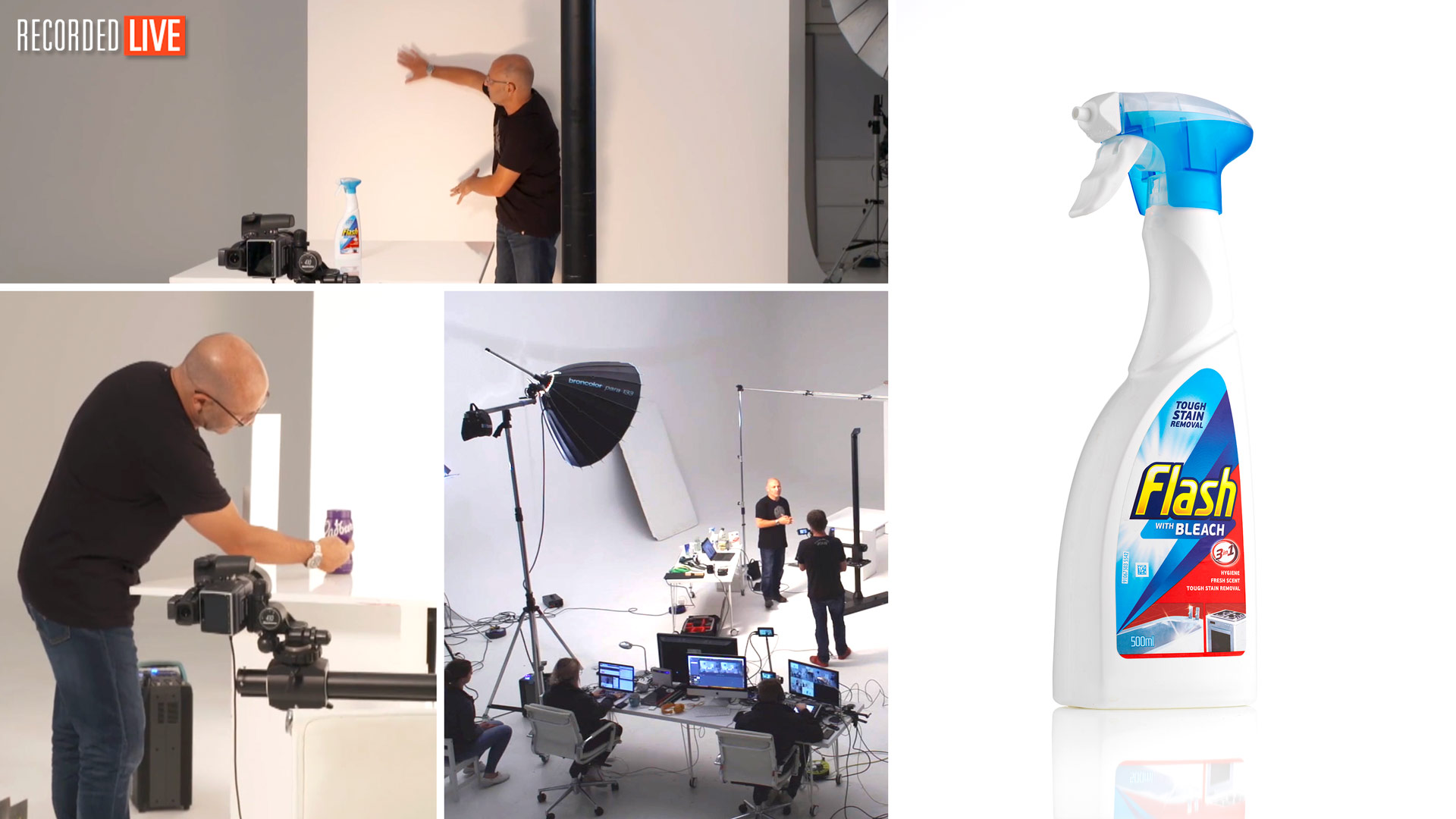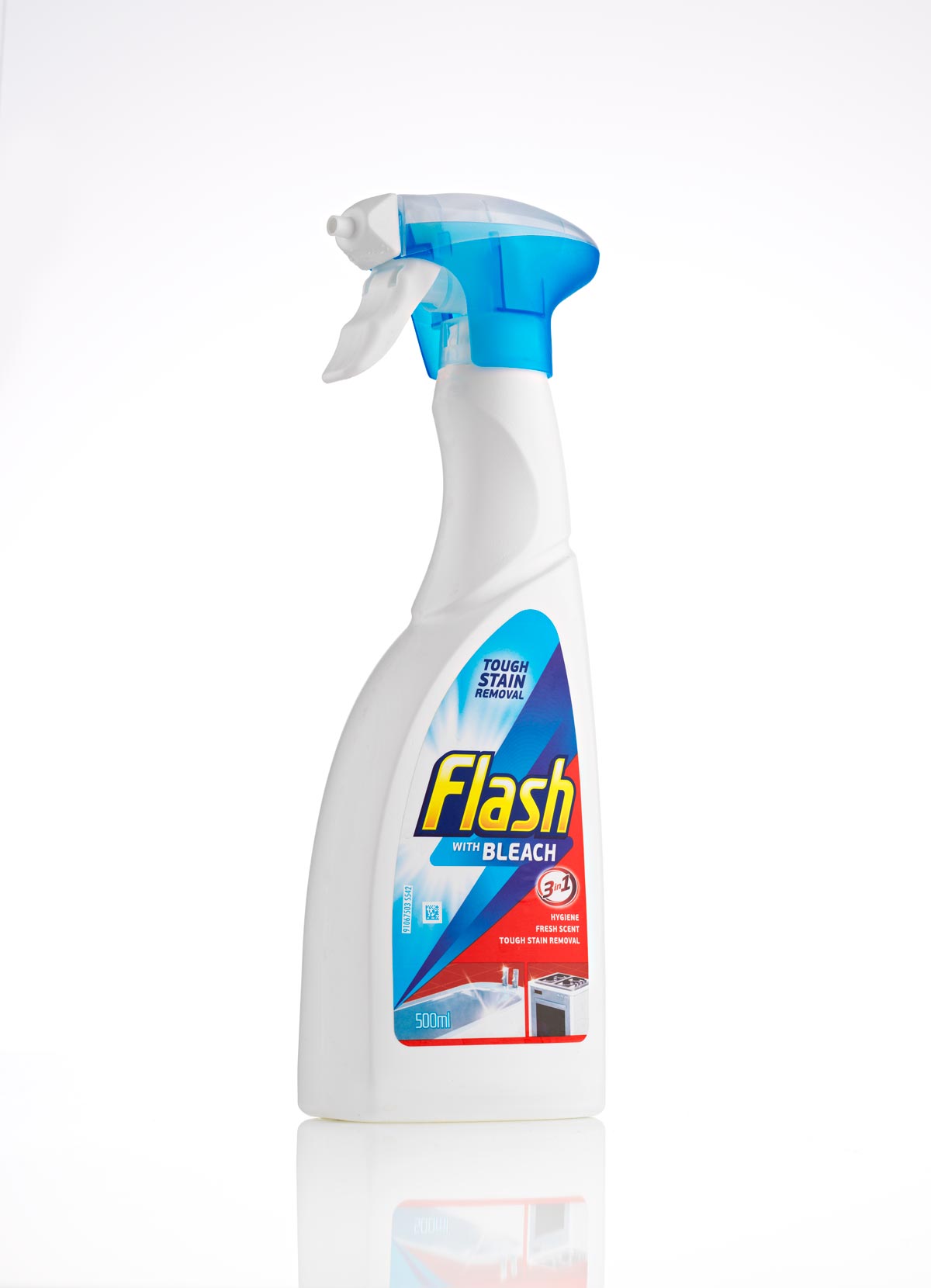Packshot Product Photography
Want to perfect your packshots? Find all the tips you need in this comprehensive tutorial.
Discover how to achieve a clean white background, photograph reflective surfaces, control unwanted reflections and shadows on your products, and much more!
When you’re shooting packshots, speed and efficiency are key. That’s why it’s essential to have a lighting setup that’s both suitable and simple.
In this class, recorded LIVE, you’ll learn how to set up, light and and capture successful packshots.
Working through multiple products, Karl demonstrates just how important perfecting your lighting setup is. Starting with a simple two-light setup, he shows you how to achieve a professional result quickly – even if you’re working in a small studio and using basic modifiers.
In this class:
- Product photography: Packshots
- How to photograph packshots
- Studio lighting setups for packshots
- How to achieve a pure white background
- Small studio photography
- How to control shadows
- Controlling reflections on shiny objects
If you enjoy this class, check out Packshots: White Background Product Photography.
Questions? Please post them the comments section below.



Comments
Hi Karl,
Great Video! I would like to know where I can purchase the overhead Skrim you are using to bounce off the light for the shots from the top? Additionally in the case I do not have a white ceiling or the ceiling is simply to high (e.g. warehouse of a client) would it be advisable to use an umbrella with diffusion or a large softbox with a single light boomed out to be exactly on top of the product? Thanks in advance for your answer.
Hi Kaygu, the overhead panel here is just foamboard. It’s available in black or white from Art supply companies and often Sign service companies, you can also use large sheets of polystyrene which is used as wall/floor insulation and available from building merchants. Any white panel will work or if you had a large enough softbox on a boom but that’s probably too much for this set up.
what was the purpose of having the overhead sheet of acrylic ? was it for extra bounce?
reason I ask is I’m working a small work space with low ceilings
if I’m shooting say black on black the white ceiling would be an issue?
Hi Mdoza, yes the overhead sheet was a fill reflector to bounce a little more general soft light into the area. And yes white ceilings can be great for this but they can also be a problem in other scenarios where you don’t want light bounce, I recommend using velcro and black foam board panels and sticking them to the ceiling when necessary.
Hi Karl,
Great content as always. I was reading through the comments and saw your advice of using matt acrylic to create a shadow rather than a reflection. I have been asked to do shadowless pack shots. Do you have any advice for creating this in camera or is it a matter of cutting them out in Photoshop after the fact?
Thanks.
Hi Squiggle, it depends on the angle you are shooting the pack shot. You get a better white off of the gloss acrylic if you are shooting a standing product because the gloss is reflecting the background white, then just photoshop the reflection of the product out too white too. You’ll see in the live show listing I’ve got another technique for shadowless shots coming soon but this only applies if you can shoot down on the subject.
Hi Karl, I’m currently shooting food items in clear plastic bags/packaging (crips packet shape). I’m using a polariser filter which helps but I’m sill finding it difficult to get the results I want especially within a timely manner.
The solution Im using is placing a scrim closely in front of the product, then shooting 120 x 80 soft box at a 70° angle placed against that top of the scrim and shooting a P70 through a small thick scrim as the background.
I want to portray that the item is glossy whilst eliminating unwanted wrinkles and creases. I feel what I have is close but not quite up to scratch.
Have you got any ideas? I’d love to hear your thoughts!
Hi Jack, yes it’s a tricky one and I don’t like photographing products in those sort of wrappers because the angle of reflections can be so different every time. As you probably know the key problem is the angle of reflection, so your light source is bouncing off the clear plastic and creating unwanted highlights. If you think about that for a moment there are three possible solutions, 1. No wrapper 2. Polarising filters 3. The angle of incidence of the light. All of these have their own problems but let me give you a couple of ideas. First if all the packets are the same size and position you can cut the tops off of the wrappers and then create a photoshop version of the top of a wrapper and paste it onto every pack. Changing the angle of incidence of the light is great for a given wrapper but unfortunately they will never have the same angle of reflection on every packet and you may not then get the lighting angle suited to the product inside the wrapper, however by changing the focal length to a much longer lens you will change the angle of reflections and have a little more versatility. Finally polarisers are great but consider using them on the lights as well or instead, see this live show – https://visualeducation.com/class/live-workshop-polarising-studio-light-and-why/
Great courses. Love them.
Can a large softbox be used overhead for top shots instead of bouncing light into the ceiling?
Hi Vincent, thank you and yes it can.
hi Karl and team,
thanks for the work you are doing, keep it up!
general question: can a packshot be also on black background or if so it gets off that concept?
Hi Kareas, A packshot could be on any background. The term packshot usually refers to a relatively easy product shot to set up, light and shoot and that you could use the same set up for a series of 50 or 100 similar products. This is why packshot services offer low prices because they are usually working in bulk. It becomes a proper product shoot as soon as more creative lighting or a set is required.
very clear as always, thank you very much!
Thank you.
Hi Karl,
Oliver from Germany. I am new to your courses and enjoy and learn a lot.
One question regarding the boxes you use to put the products on. What size are they?
Hi Oliver, thanks for joining us. If you mean the big blocks that I regularly use to make a low or high table, I have two of them and they are 40x40x70cm.
Hello Karl,
I really love your videos and learnt tons in this one.
I am new to photography still though. How does Ash control the amount of stops on the light sources? When you mention to her she should turn it up by half a stop, how does this work?
Hi, I’m glad you are enjoying our content! The answer to your question is covered in this section – https://visualeducation.com/section/lighting-theory-and-equipment/ in chapter 2. But I would watch all of the classes in this section to properly understand studio lighting.
Hi Karl practicing now. Can I ask why you didn’t flag the cleaning product but you did the simple product
Hi Sonny, it of course is best practise to flag everything to avoid flare but sometimes I’m a bit lazy and if I don’t see a problem then I don’t fix it! 🙂
Hey Karl,
Great episode!
Are you able to get that same pure white surface the product is on (when only illuminating the background) with a non reflective surface, say a matte paper surface?
Sarah
Hi Sarah, no not with this technique unfortunately, instead you have to light from above and behind directly onto the white but this can create problems of lighting on the product so you have to control it carefully.
You mentioned in this video that you cannot use a polariser on metal surfaces. This confused me as I use polarisers very often with automotive photography as they have a huge benefit on car body work, which are very often metal. Why is this?
Much Appreciated
Hi Thomas, because the surface you are photographing is not metal, it’s 3 layers of paint and a 2 layers of laquer.
What is the White Balance you use for all your photography shoot?
What is the Metering Mode you use for all your shoot?
Suggest the learning topic to refer for all the Camera Settings?
Hi,
White balance: Flash (as i’m mostly shooting flash, or daylight 5600K which is the same)
Metering Mode: I don’t use a metering mode as I don’t meter. I set my aperture based on the depth of field I require and then the shutter speed until the ambient light is at my desired exposure.
All of this sort of stuff is covered in our Introduction to Photography course in the Essentials section.
This was a great video. What kind of surface would you recommend putting the product on if I wanted a bit of a shadow but no reflection? I have found with my shots that shooting on perspex gives a brilliant white, but a strong reflection,; paper works but its harder to get pure white without a lot of photoshop work after.
Hi Matt White, plexiglass (perspex/acrylic) here in the UK you can buy it in gloss or matt and the matt is a very good solid brilliant white.
hi Karl ,Anish from India l love your way to explaining shoots
how can we achieve white background in jewellery shoot for E-commerce
without cutout background
Hi Anish, the same as our Jewellery rings class but also add a small softbox from underneath on a very low power through the acrylic.
Thanks Karl for your support
Hi Karl,
Which diffusion material do you use for the background light (on the bar door)?
Thanks!
Hi Joel, it’s just a smaller piece cut from exactly the same material I mention in all the other tutorials with scrims. Such as these
https://visualeducation.com/class/motorcycle-photography/
https://visualeducation.com/class/live-whisky-photography-advertising-shoot/